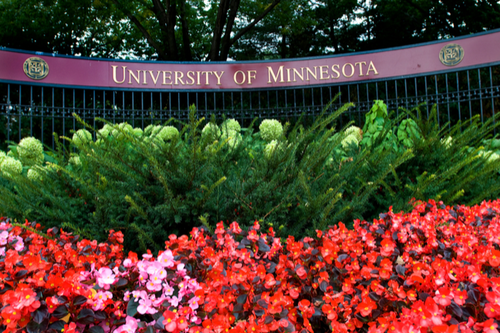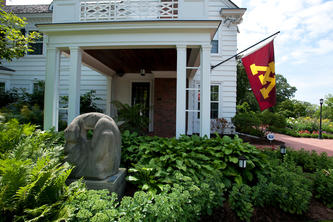
Knowledge of definitions and procedures for responding to sexual misconduct — including where to get help and where to report — has increased significantly among University of Minnesota Twin Cities students, according to the results, released today, from the 2019 Association of American Universities (AAU) Campus Climate Survey.
AAU’s survey is the largest examination of sexual assault and sexual misconduct on campuses across the country. It is designed to provide a comprehensive picture of the prevalence of incidents on the 34 participating campuses. The results also provide universities with detailed information needed to better inform efforts to prevent and respond to sexual assault and other misconduct.
The U of M Twin Cities participated in the first AAU survey in 2015 and used the data, along with community input through the President’s Initiative to Prevent Sexual Misconduct launched by the University in 2017, to identify key issues across the institution and develop policies and procedures to address them. Comparing this historical data and feedback to this year’s results highlights how prevalence of incidents, as well as perceptions and knowledge of school policies and procedures, have changed during the past four years.
Nearly 13,000 students on the Twin Cities campus participated in the survey. The 29.1 percent response rate is nearly double the campus’ response rate in 2015 and higher than the average of all participating universities in 2019.
“I appreciate that so many of our students made their voices heard on this troubling and important issue,” said University of Minnesota President Joan Gabel. “Fostering a campus environment where everyone feels welcome, safe, supported, and free of harassment requires every member of our community to take responsibility for their actions and to do their part to prevent and respond to sexual misconduct. We will continue to use data, including survey results, to inform our work as we strengthen our culture together.”
Notable 2019 survey findings: Nonconsensual sexual contact
Among undergraduate women, the rate of nonconsensual sexual contact, by physical force or inability to consent, increased by 2.1 percent from 2015 to 25.6 percent. In all other categories — graduate and professional women; transgender, genderqueer and non-binary students; and men — the change was not statistically significant.
“Incidents of sexual assault, harassment and misconduct are chronically underreported, so we were not surprised to see an increase in reports both on the Twin Cities campus and at universities across the country,” said Katie Eichele, director of The Aurora Center, the University’s advocacy and education center devoted to addressing issues of sexual assault, relationship violence and stalking. “Furthermore, on the Twin Cities campus, we are seeing demand for The Aurora Center's services increase. It's additional evidence that our efforts to increase awareness are making students more comfortable in seeking help, which is vitally important."
Sexual harassment
Overall, 18.7 percent of U of M Twin Cities students have experienced harassment since enrolling. Students were also asked about experiences with harassing behavior (e.g., offensive jokes, unwanted advances). In total, 38.3 percent of students said they experienced harassing behavior as a University student. That rate rose to nearly 50 percent for students who identified as transgender woman, transgender man, nonbinary/genderqueer, gender questioning, or gender not listed. The most common offender — for all populations — is a fellow student.
“We need to build a culture of civility, one where all of us feel respected and are thus free to do our best work,” said Karen Hanson, executive vice president and provost. “We need to recognize and maintain appropriate boundaries in the classroom and lab, in office spaces and co-curricular activities. Both academic success and personal well-being are threatened by sexual harassment, so we have a special responsibility to see to it that our University is free from this sort of behavior."
Training, knowledge and awareness
There were significant increases on the Twin Cities campus from 2015 to 2019 in student reports of their knowledge about school definitions and procedures related to sexual misconduct, including where to get help and where to report. Close to 90 percent of incoming students indicated they had completed sexual misconduct training, an increase of more than 47 percent from 2015. Survey results show graduate and professional women are considerably more knowledgeable about this topic than in 2015, including the definitions of sexual assault and misconduct (up 24.7 percent), where to get help (up 14.2 percent), where to report (up 11.2 percent) and what happens when one reports (up 14.3 percent).
Bystander behavior
Among students who reported witnessing a situation they believed could lead to sexual assault, more than three-fourths (75.5 percent) took some type of action, defined as intervening or expressing concern. Among those who witnessed a situation that made someone feel uncomfortable or offended, 65.2 percent said they took some type of action.
“Helping students understand how to intervene in an uncomfortable or potentially dangerous situation is an area we remain focused on,” said Maggie Towle, interim vice provost for student affairs and dean of students. “The survey results indicate our work to date through education and training is having an impact. We will continue to engage student leaders from all areas of campus to enhance our approach and equip more students with these much-needed skills.”
- Categories:
- Campus Affairs





